#Theophil Hansen
Text


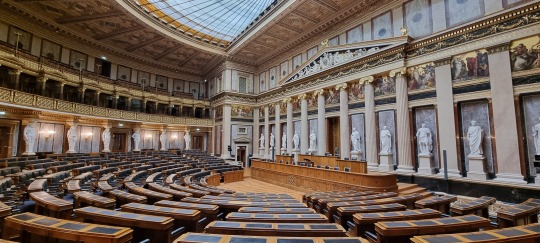


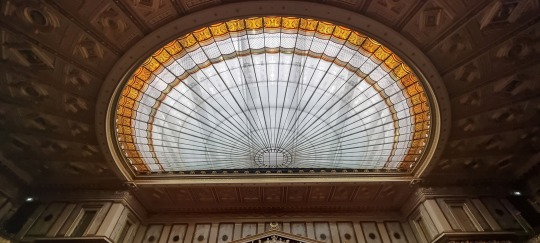
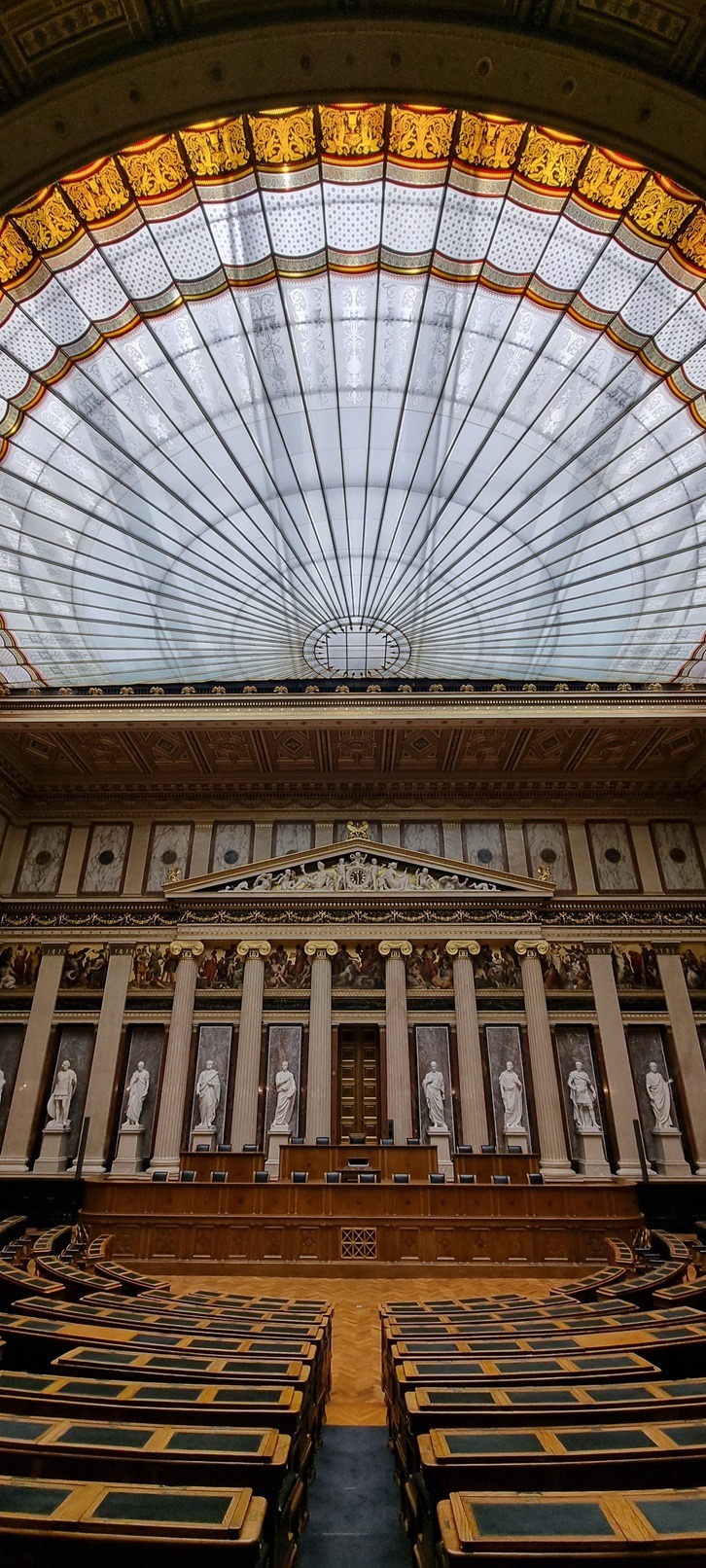
Austrian Parliament Building, Dr. Karl Renner-Ring 3, 1017 Wien
Österreichisches Parlamentsgebäude
Здание австрийского парламента
Bâtiment du Parlement autrichien
──────────────────────
Former Plenary hall of the House of Deputies (1883–1918) inside the Austrian Parliament Building, Vienna, Austria
Ehemaliger Sitzungssaal des Abgeordnetenhauses 1883–1918
Бывший зал заседаний Палаты представителей 1883–1918 гг.
Ancienne salle de réunion de la Chambre des représentants 1883–1918
#Austrian Parliament Building#Austria#Parliament#building#Vienna#Theophil Hansen#1884#Parlamentsgebäude#Österreich#Wien#Parlament#здание#Парламент#Австрия#bâtiment#parlement#autrichien#Autriche#Vienne#Вена#Sitzungssaal#Abgeordnetenhaus#1883–1918#Plenary hall#House of Deputies#зал заседаний#Палата представителей#ancienne salle de réunion#Chambre des représentants
2 notes
·
View notes
Photo
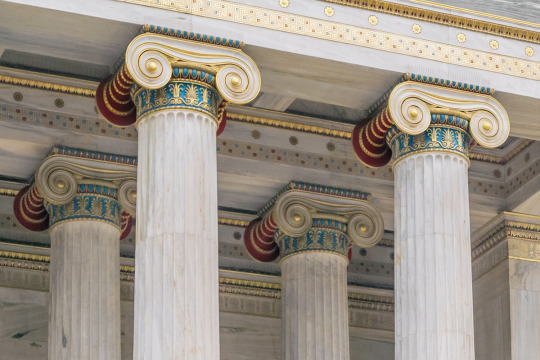
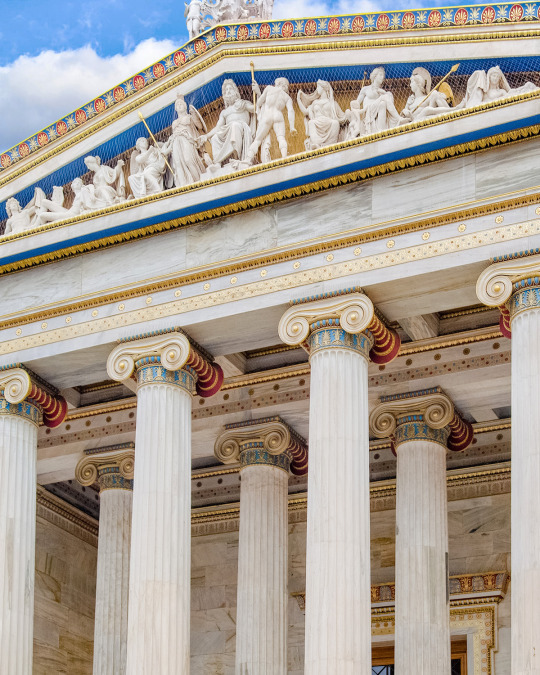

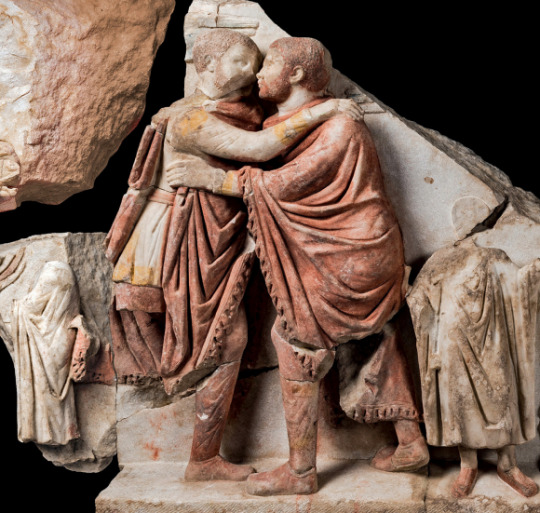
Happy Friday! We love colorful architecture, modern and ancient! Polychromy, color in ancient architecture and sculpture, was first discovered in the 19th century, and it is still startling. Buildings from the late 19th and early 20th often show classical architecture as it might once have looked: the Academy of Athens (Hansen, 1859) and the Philadelphia Museum of Art (Trumbauer, 1916-28). For the dubious, actual paint remnants on a Roman relief from Nicomedia (2nd century)!
1 note
·
View note
Photo




Happy Friday! We love colorful architecture, modern and ancient! Polychromy, color in ancient architecture and sculpture, was first discovered in the 19th century, and it is still startling. Buildings from the late 19th and early 20th often show classical architecture as it might once have looked: the Academy of Athens (Hansen, 1859) and the Philadelphia Museum of Art (Trumbauer, 1916-28). For the dubious, actual paint remnants on a Roman relief from Nicomedia (2nd century)!
0 notes
Text

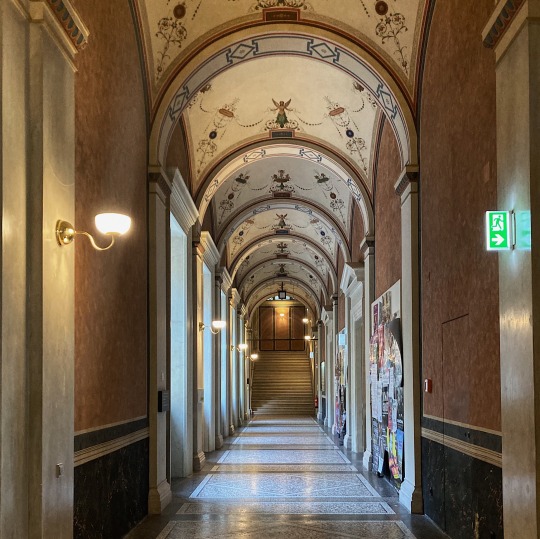




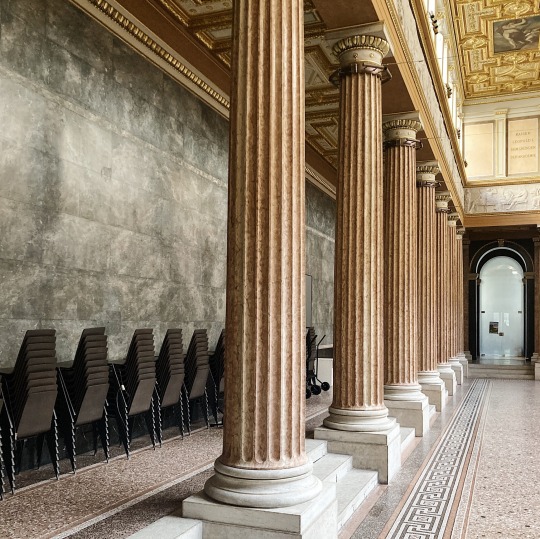

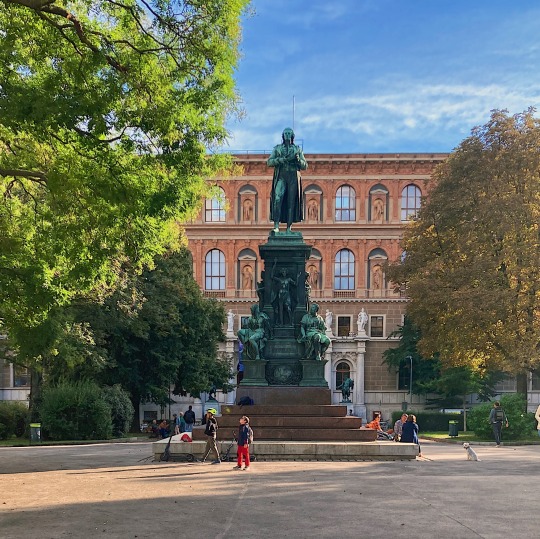
Once again it is the yearly Open House in Vienna. Buildings that aren’t usually accessible to the public are open without paying an entrance fee.
#open house#vienna#aesthetic#photographic evidence#my pics#semmelweis klinik#akademie der bildenden künste#arts academy vienna#theophil von hansen
16 notes
·
View notes
Text
Old Vienna
Anno 1900

Universitätsring 14 (die ursprüngliche Adresse lautete Franzensring 24, von 1934 bis 2012 Dr.-Karl-Lueger-Ring 14).
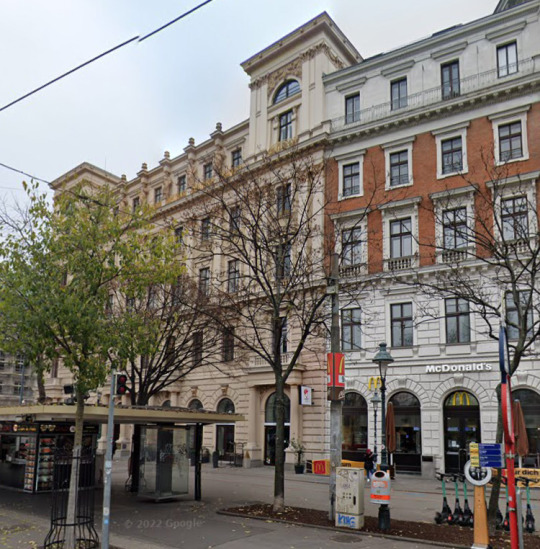
Das Palais wurde von Theophil von Hansen 1872 bis 1873 in der Entstehungszeit der Wiener Ringstraße für den aus Odessa stammenden Bankier Ignaz von Ephrussi erbaut.

Das Palais war Wohnsitz des Wiener Zweigs der Familie Ephrussi, zuletzt von Viktor (von) Ephrussi (1860–1945) und seiner Ehefrau Emmy, geborene Schey von Koromla (1880–1938). Es wurde nach dem „Anschluss“ Österreichs 1938 „arisiert“, da die Familie Ephrussi jüdischer Abstammung war. Der Wiener Zweig der Familie musste fliehen. Das NS-Regime benutzte das Palais als Bürohaus.
Nach dem Krieg wurde das Palais vorerst von Dienststellen der amerikanischen Besatzungsarmee genutzt. 1950 wurde es an die englische Rechtsanwältin Elisabeth de Waal, geb. Ephrussi (1899–1991) restituiert und anschließend von ihr weiter verkauft. Fast das gesamte Inventar wie Möbel und kostbare Kunstwerke wurde geraubt.
Von 1969 bis 2009 befand sich im Palais der Firmensitz der Casinos Austria.
0 notes
Text
0 notes
Text
The Ringstrasse is a 5.3-kilometer circular boulevard that wraps around Vienna's historic city center. On the boulevard, there are many places such as the most magnificent structures of the city, interesting buildings and must-see museums and restaurants. The most important buildings of Vienna, one of the capitals of culture and art, are located on the street. Ringstrasse, one of the most beautiful streets in Europe in terms of history, architecture and aesthetics, is at the top of tourists' travel lists.
The Vienna State Opera is one of the most important buildings on the boulevard. It has an important place in both Austrian history and world history. The opera house, which has been in service since 1869, reflects the Neo-Renaissance period. It was closed with the destruction caused by the Second World War, but reopened in 1955.
Neue Burg is a palace that houses the National Library and the Weltmuseum. The palace, whose construction was completed in 1913, is located opposite Heldenplatz Square.
The Kunsthistorisches Museum is one of the most popular museums in the world. The museum, which has been in service since 1891, hosts important works such as the most important art treasures of the Habsburgs and the largest Brueghel collection in the world.
The National History Museum is very important as it hosts the largest natural science collection in the world.
The Parliament Building is among the most important architectural structures of the boulevard and Vienna. Reflecting the features of Greek architecture, the building was built between 1874 and 1883 by Theophil von Hansen. The fountain named Pallas Athene is also very interesting.
Vienna City Hall is one of the must-see structures of the city with its Neo-Gothic architectural design. During the year, many events are organized in the square where the building is located.
The National Theatre, built between 1874 and 1888, the ceiling of the theater was created by Gustav Klimt, Franz Matsch and Ernst Klimt. The theater stage hosts the best actors of the world throughout the year.
Ringstrasse is a street that has remained quite green besides being home to many important buildings. When people come here, they not only visit art venues, but also find the opportunity to rest as much as they want in green areas. Along the street, 2400 trees, from sycamore to linden trees, invite nature lovers to rest in their shade.
0 notes
Text
0 notes
Link
0 notes
Text
The Ringstrasse is a 5.3-kilometer circular boulevard that wraps around Vienna's historic city center. On the boulevard, there are many places such as the most magnificent structures of the city, interesting buildings and must-see museums and restaurants. The most important buildings of Vienna, one of the capitals of culture and art, are located on the street. Ringstrasse, one of the most beautiful streets in Europe in terms of history, architecture and aesthetics, is at the top of tourists' travel lists.
The Vienna State Opera is one of the most important buildings on the boulevard. It has an important place in both Austrian history and world history. The opera house, which has been in service since 1869, reflects the Neo-Renaissance period. It was closed with the destruction caused by the Second World War, but reopened in 1955.
Neue Burg is a palace that houses the National Library and the Weltmuseum. The palace, whose construction was completed in 1913, is located opposite Heldenplatz Square.
The Kunsthistorisches Museum is one of the most popular museums in the world. The museum, which has been in service since 1891, hosts important works such as the most important art treasures of the Habsburgs and the largest Brueghel collection in the world.
The National History Museum is very important as it hosts the largest natural science collection in the world.
The Parliament Building is among the most important architectural structures of the boulevard and Vienna. Reflecting the features of Greek architecture, the building was built between 1874 and 1883 by Theophil von Hansen. The fountain named Pallas Athene is also very interesting.
Vienna City Hall is one of the must-see structures of the city with its Neo-Gothic architectural design. During the year, many events are organized in the square where the building is located.
The National Theatre, built between 1874 and 1888, the ceiling of the theater was created by Gustav Klimt, Franz Matsch and Ernst Klimt. The theater stage hosts the best actors of the world throughout the year.
Ringstrasse is a street that has remained quite green besides being home to many important buildings. When people come here, they not only visit art venues, but also find the opportunity to rest as much as they want in green areas. Along the street, 2400 trees, from sycamore to linden trees, invite nature lovers to rest in their shade.
0 notes
Text
Musikverein | Óscar Tenreiro Degwitz
La Goldener Saal (Sala Dorada) de la Musikverein, (Sociedad de la Música, sede de la Filarmónica de Viena) fue junto a otras cosas motivo principal para un viaje reciente. Es obra del arquitecto danés Theophil Hansen, se inauguró en 1870 y como sala de conciertos es única gracias a su impecable acústica y otros asuntos sensibles para los arquitectos.
[...]
0 notes
Text


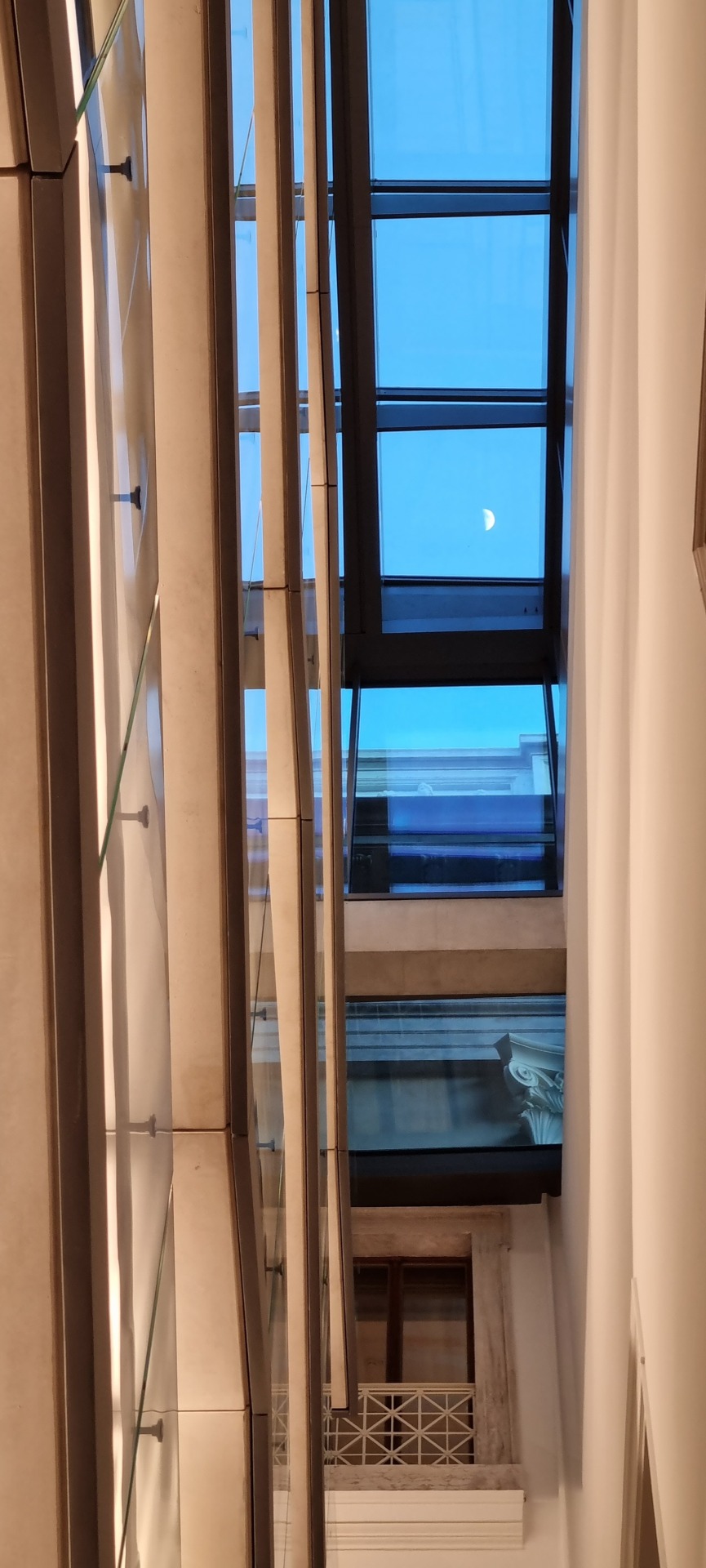
Austrian Parliament Building, Dr. Karl Renner-Ring 3, 1017 Wien
Österreichisches Parlamentsgebäude
Здание австрийского парламента
Bâtiment du Parlement autrichien
──────────────────────
View up next to the visitor staircase
#Austrian Parliament Building#Austria#Parliament#building#Vienna#Theophil Hansen#1884#roof#Dach#staircase#view up#visitors#Stiegenhaus#Parlamentsgebäude#Österreich#Wien#Parlament#здание#Парламент#Австрия#bâtiment#parlement#autrichien#Autriche#Vienne#Вена#Innere Stadt#Vídeň#Wiedeń#Bécs
2 notes
·
View notes
Photo

Vienna Ring Road (Ringstraße) - Old Photograph
The Austrian Parliament building during its Construction
22 notes
·
View notes
Note
The fact that the Austrian parliament has a more greek architecture than the Greek one itself says a lot about us not appreciating our heritage enough 😒
Well think of it the other way round. At least the Greek parliament looks more Greek than the Austrian looks Austrian 😜
(As a sidenote, the Austrian parliament was designed by the neo-classicist Theophil Hansen as a legislative building. The Greek parliament is housed in the Old Palace of King Otto so it was a residence originally. It is neoclassical too though. By the way, Hansen has designed buildings in Greece too, the National Library, the Academy of Athens and the National Capodistrian University.)
17 notes
·
View notes
Photo

Round staircase of the National Library of Greece, Athens
The National Library of Greece was designed by Theophil Hansen and built between 1887 and 1891. The building was designed as a Doric temple and built almost entirely with Pentelic marble.
#architecture#neoclassical#athens#greece#art#culture#national library of greece#white#white aesthetic#stairs#column#columns#doric#renaissance#staircase#design#classy#original photogrpahy#greek architecture#athenian trilogy
665 notes
·
View notes
Text
Old Vienna
Anno 1897
Palais Wernberg Linke Wienzeile
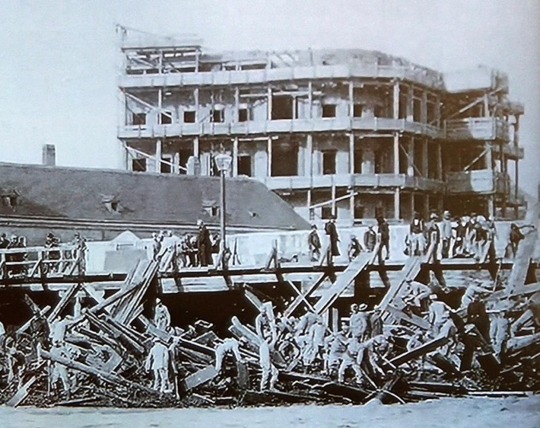
Herbst 1897. Das Palais ist gerade in Bau, links davon noch die alten und niedrigen Biedermeierhäuser. An deren Stelle werden schon demnächst die beiden Otto-Wagner-Häuser (Majolikahaus und Bankhaus) errichtet werden. Davor wird gerade der Wienfluß eingewölbt.
Die Außenansicht des Palais Wernberg an der Linken Wienzeile mit Blick von der Rückseite des Marktamts.


Cafe Wienzeile Schon der erste Eindruck spricht für sich. In der Bildmitte Luster von Theophil Hansen. Ganz rechts eine der beiden ägyptischen Figuren, die schon Rudolf Nurejew beglückten.

Nochmals innen. Im Hintergrund einer der beiden Monumentalspiegel, die in Belgien meisterlich gefertigt wurden. Links die Ägypterstatue Nr. 2.
0 notes